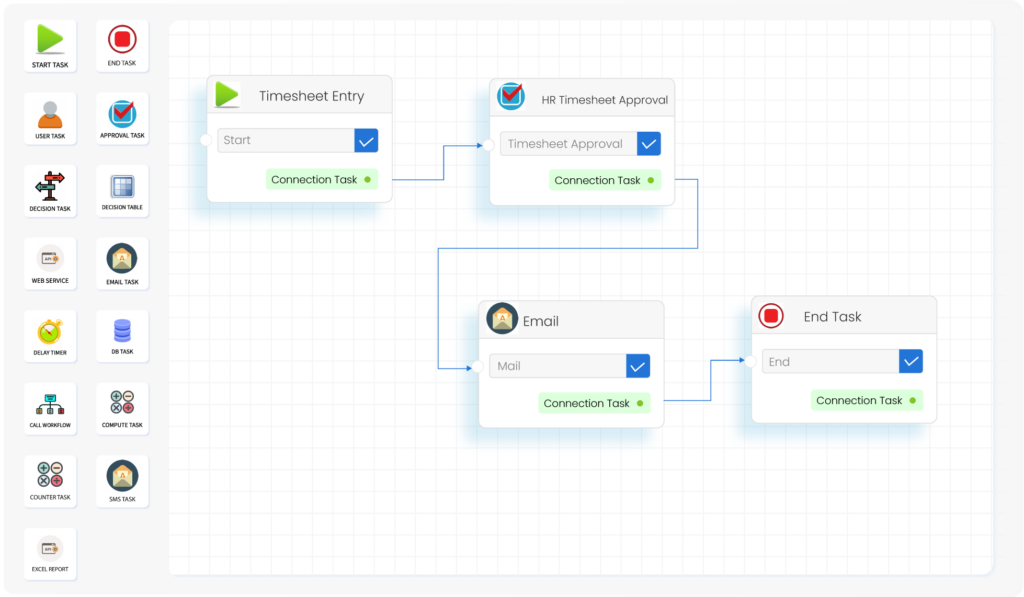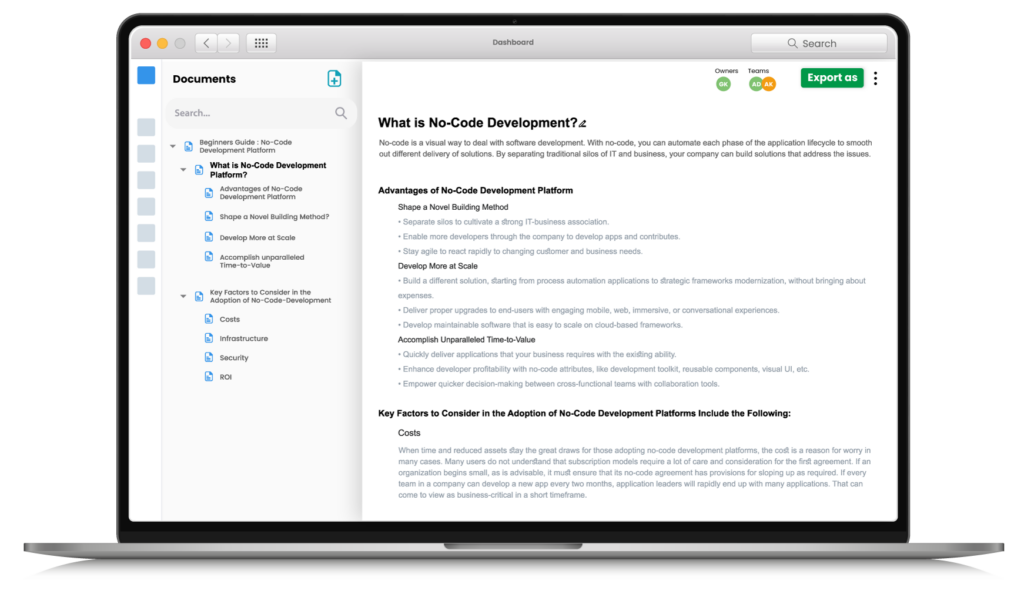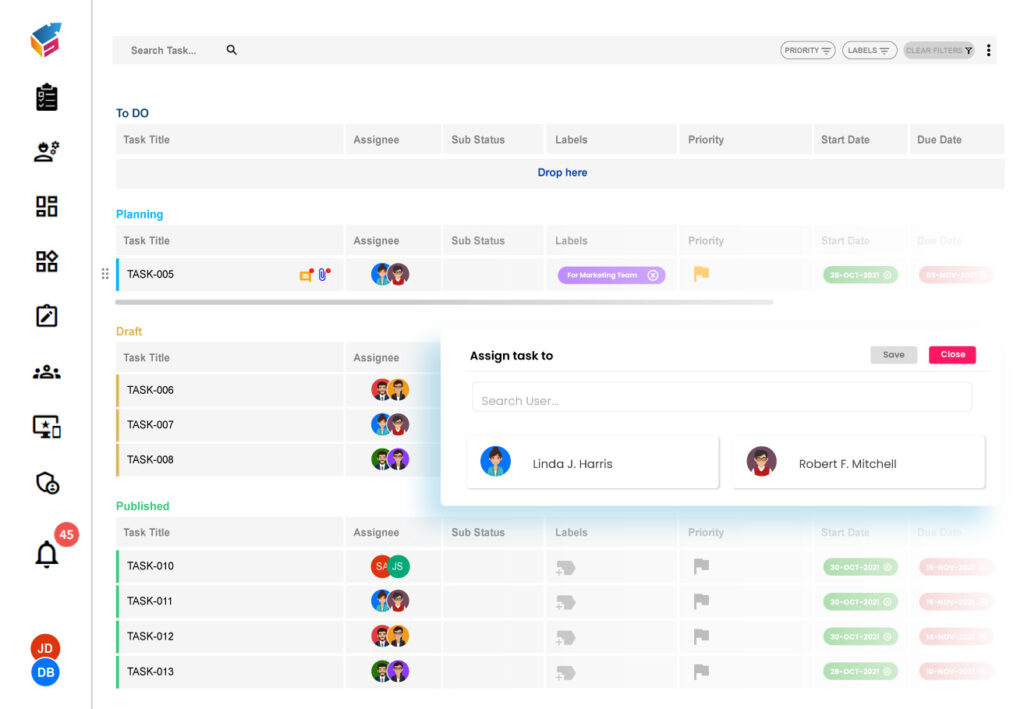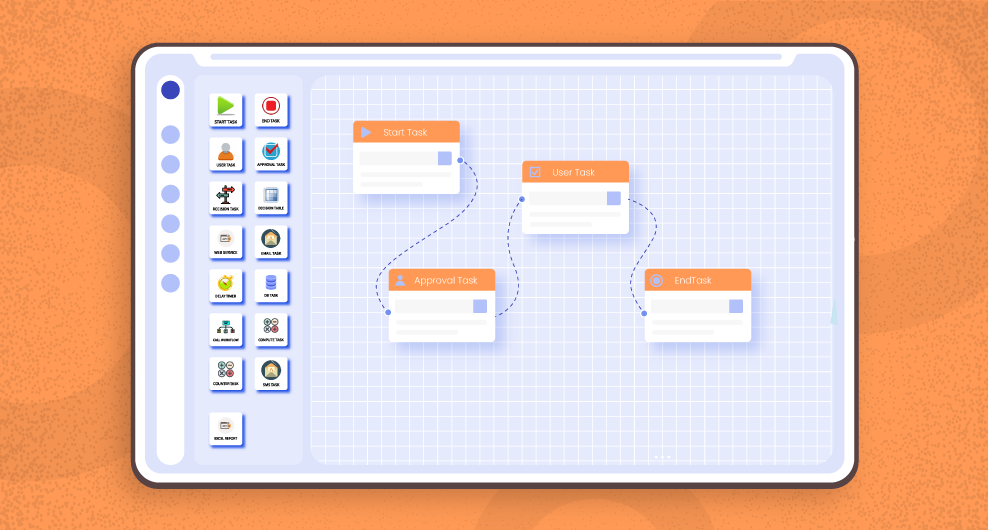Table of Contents
What is Document Management Workflow?
A Document Management Workflow is a process or system that organizations use to manage, organize, store, and retrieve documents and files efficiently and securely. It involves the steps and procedures that create a document go through from their disposal, including how they are edited, reviewed, approved, distributed, stored, and retrieved. The workflow also outlines the roles and responsibilities of the individuals involved in the process document, as well as any necessary approvals or reviews.
The primary goal of a document management workflow is to streamline and optimize the document management process, reduce errors, improve productivity, and ensure compliance with regulatory and legal requirements. Document management workflows are commonly supported by software solutions that automate and integrate various steps of the document workflow automation, making the process more efficient and user-friendly.
Types of Document Management Workflow
There are several types of Document Management Workflows that businesses can use to manage their documents effectively. These workflows can be customized to meet the specific needs of the organization.

Here are some of the most common types of Document Management Workflows:
- Sequential Workflow: This type of workflow is linear and follows a specific order. Documents move from one stage to the next, and each stage must be completed before the next stage can begin. This type of workflow is commonly used for document review and approval processes.
- Parallel Workflow: In this type of workflow, documents are processed simultaneously by different team members or departments. This type of workflow is commonly used for tasks that require multiple people to complete at the same time, such as document creation or data entry.
- Rule-based Workflow: This type of workflow is based on pre-defined rules or conditions. Documents are automatically routed to the appropriate team members or departments based on specific criteria, such as document type, department, or urgency.
- Dynamic Workflow: This type of workflow is flexible and can change based on the circumstances. The document workflow software can be modified based on the feedback or input of team members or changes in the organization’s needs.
- Ad-hoc Workflow: This type of workflow is created on an as-needed basis and is not pre-defined. It allows team members to collaborate and share documents in real-time, without a set process or workflow.
Each type of Document Management System has its own advantages and disadvantages, and businesses can choose the type that best suits their needs and goals. The choice of workflow type will depend on factors such as the type of documents being managed, the size of the organization, the number of team members involved, and the level of automation required.
Steps Involved in Building and Optimizing a Document Management Workflow
In today’s world, businesses are generating more data than ever before. To keep up with the pace of this data generation, businesses must have an effective document management workflow. A document management workflow is a system used to organize, store, and retrieve important documents in a structured and efficient manner. By optimizing your document automation, you can reduce costs, improve productivity, and minimize risk.
In this comprehensive guide, we will discuss the steps involved in building and optimizing a document management workflow.
Identify Your Needs
The first step in building an effective project management workflow is to identify your needs. This includes understanding what types of documents you need to manage, how frequently they are created and accessed, who needs access to them, and how long they need to be retained.
By understanding your needs, you can begin to develop a plan for your document management workflow. This plan should outline your goals, the tools and technologies you will need, and the roles and responsibilities of your team.
Choose the Right Tools
Once you have identified your needs, the next step is to choose the right tools. There are many document management software solutions available on the market today and choosing the right one can be overwhelming.

To choose the right tool for your business, you should consider factors such as ease of use, scalability, integration with other systems, security, and cost.
Define Your Workflow
After selecting your tools, you can begin to define your document management workflow. This involves creating a step-by-step process for how documents will be created, stored, and retrieved.
Your workflow should include the roles and responsibilities of each team member involved in the process, as well as any necessary approvals or reviews.

Automate Where Possible
One of the key benefits of online document tool is the ability to automate many aspects of the document management workflow. This can include automating document creation, storage, retrieval, and even approvals.
By automating these processes, you can save time and reduce errors, freeing up your team to focus on more important tasks.
Train Your Team
After implementing your document management workflow, it is important to train your team on how to use the new system. This should include training on how to create, store, and retrieve documents, as well as any necessary approvals or reviews.
Training should also include best practices for document management, such as how to properly name and organize files.
Monitor and Improve
Finally, it is important to monitor and continually improve your document management workflow. This can include analyzing usage data to identify bottlenecks or inefficiencies and adjusting as needed.
By continually improving your workflow, you can ensure that it remains effective and efficient over time.
Conclusion
An effective document management workflow is critical for businesses in today’s data-driven world. By following these steps to build and optimize your workflow, you can reduce costs, improve productivity, and minimize risk.
Remember to identify your needs, choose the right tools, define your workflow, automate where possible, train your team, and monitor and improve over time. By taking a comprehensive approach to document management, you can set your business up for success in the long term.




